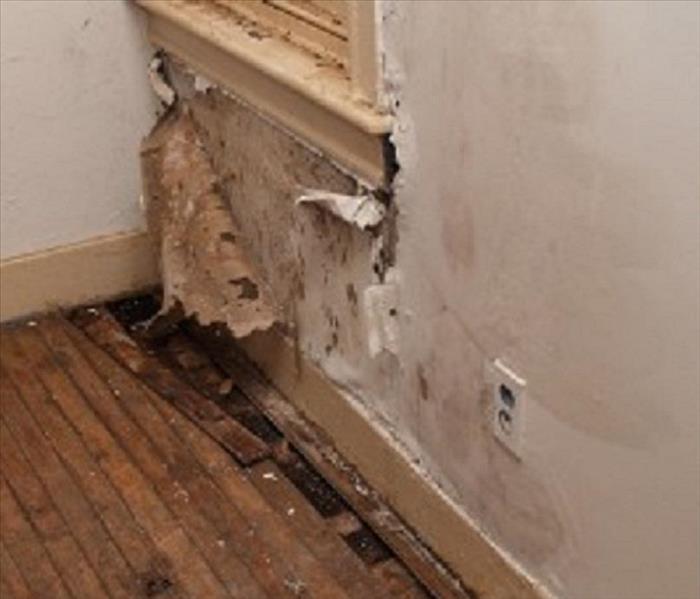Indoor Relative Humidity and Moisture issues, Inside Your Property, in Cherry Hill, NJ
5/19/2017 (Permalink)
When indoor humidity levels are too high, condensation on windows and walls starts to cause structural damage. Damage to the house manifests in wood rot, molds, damp spots, and corroding furniture.
Costly damage caused by moisture that builds up can occur between the walls and ceilings, paint may start to peel as well as permanent wood warping/damage.Every time we cook, bathe, shower or breathe, we increase the amount of moisture in the air; when these activities occur indoors, we raise the humidity level inside our home. Humidity is the amount of water vapor in the air; it makes the air feel wet and clammy or smell musty. During a hot summer day, humidity makes the air feel even warmer, since it prevents sweat from evaporating from the skin, undermining the body's way of staying cool.
Relative humidity is the amount of water the air contains compared to the amount it could contain at a specific temperature. When the relative humidity is 100 percent, the air is retaining the most moisture possible at that temperature without precipitation. Most of us feel comfortable inside our home when the relative humidity remains between 30 and 60 percent. When the indoor humidity level is below 30 percent, the air is too dry, which can harm both a home's structural integrity and the homeowners' health. Conversely, when the level is above 60 percent, the air is too wet, which is also harmful to both the home and the homeowners. Excess humidity is a breeding ground for mold, pests and rot in homes and is more likely to cause heatstroke, heat exhaustion, headaches and dehydration than a less humid atmosphere.
To combat a high humidity level inside the home, many homeowners run the air conditioning unit. While air conditioning can reduce the humidity level, the result is high energy bills and a cold and uncomfortable living space. Rather than using air conditioning, homeowners and builders can have a whole-house dedicated dehumidification system installed. This type of system operates using the home's central air distribution system. A dehumidification system can be programmed to maintain specific humidity levels, giving homeowners the ability to customize the comfort level of their home.
Whole-house dehumidification systems can be installed in both new and existing homes. Here are a few points to keep in mind when considering installing dedicated dehumidification systems:
- Choose a dehumidification system that has built-in fan cycling. This feature will keep the humidity and temperature balance steady throughout the home instead of in just one room. It will also minimize hot and cold spots and improve the overall air quality.
- Look for a dehumidification system that has the capacity to remove up to 90 pints of moisture per day from the air. For builders, a high-capacity system will provide for the flexibility of using the system in a wide variety of homes.






 24/7 Emergency Service
24/7 Emergency Service